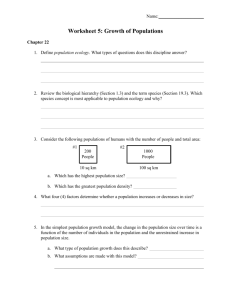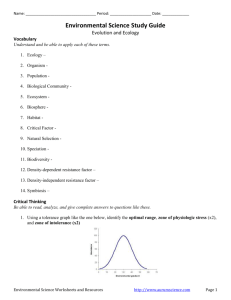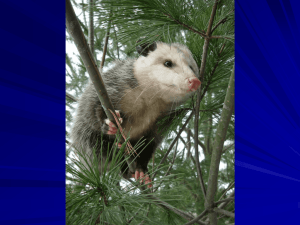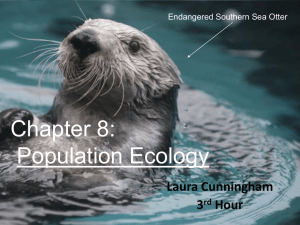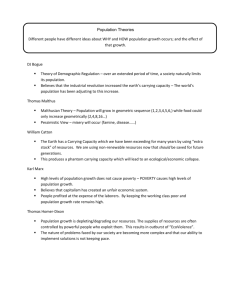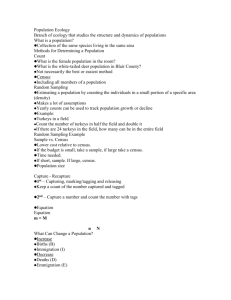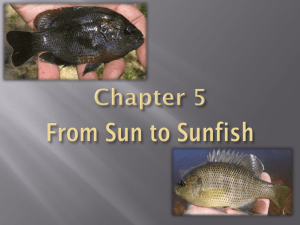ECOLOGY Ecology = study of our home Ecosystem
advertisement
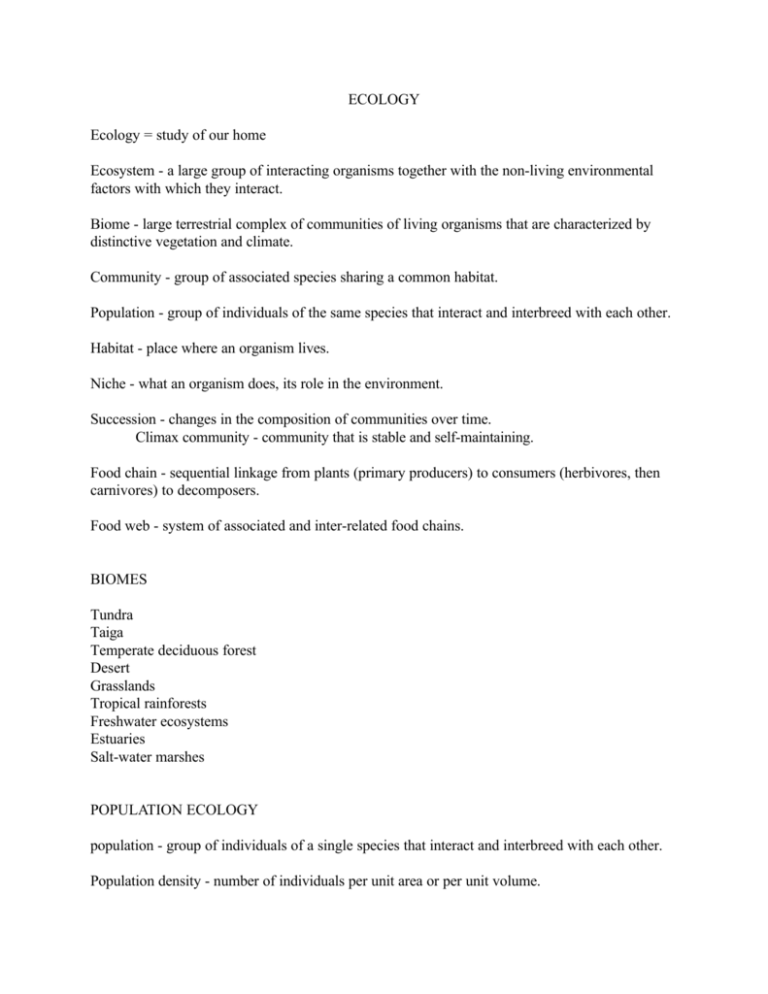
ECOLOGY Ecology = study of our home Ecosystem - a large group of interacting organisms together with the non-living environmental factors with which they interact. Biome - large terrestrial complex of communities of living organisms that are characterized by distinctive vegetation and climate. Community - group of associated species sharing a common habitat. Population - group of individuals of the same species that interact and interbreed with each other. Habitat - place where an organism lives. Niche - what an organism does, its role in the environment. Succession - changes in the composition of communities over time. Climax community - community that is stable and self-maintaining. Food chain - sequential linkage from plants (primary producers) to consumers (herbivores, then carnivores) to decomposers. Food web - system of associated and inter-related food chains. BIOMES Tundra Taiga Temperate deciduous forest Desert Grasslands Tropical rainforests Freshwater ecosystems Estuaries Salt-water marshes POPULATION ECOLOGY population - group of individuals of a single species that interact and interbreed with each other. Population density - number of individuals per unit area or per unit volume. Biotic potential - reproductive capacity of a population, when unrestricted. It is a potential of the intrinsic rate of growth, and when plotted, forms a J-shaped curve. Environmental resistance - all physical and biological limiting factors that prevent a species from reproducing at its maximum rate. Environmental resistance prevents populations from growing at their biotic potential, instead populations usually grow according to a logistic (S-shaped) curve. The population usually levels off at its carrying capacity. The carrying capacity is the maximum number of individuals that can be supported by a given habitat without loss of quality to that habitat. POPULATION REGULATION Control may be through reproduction. Large parental investment may help survival of offspring, but parents cannot afford to produce as many offspring. Organisms that do not invest in parental care often produce many offspring so that some may survive. Control through mortality. Mortality may be the result of density-dependent controls such as competition, predation, prasitism and disease. Density-dependent controls are often biotic in nature. Mortality may be the result of density-independent controls, such as weather (drought, cold), or natural catastrophes (flood, volcanoes, hurricanes, etc.). Density-independent controls are often abiotic in nature. Populations may overshoot their carrying capacity, in which case environmental resistance will bring the population back toward equilibrium around the carrying capacity. The population may overcorrect and fall below the carrying capacity for a period of time. - inter-related, associated trophic levels of producers and consumers. If a population overshoots the carrying capacity by too much, the quality of the environment will be degraded and the carrying capacity of the habitat will be reduced. HUMAN POPULATION Human population has increased dramatically over last several hundred years compared to last 8,000 years. Several factors may account for this increase. 1. We have developed the capacity to expand into new habitats and new climatic zones. 2. We have increased the carrying capacity of occupied environments. 3. We have removed some limiting factors (immunizations against some diseases). In the 1970s the rate of increase of the human population slowed. Possible factors that may account for this decrease in rate of increase include: 1. 2. 3. 4. Changing role of women in society. Changes in attitudes toward family size. Advances in birth control. Liberalized abortion laws.
